JOIN the AFICIONADOS
Get the insider news and lowdown on what we've been up to, where we've been, and who we've met along the way. Be the first to discover new places and get the scoop on our favourites.
High above the cobbled streets of Dinkelsbühl, where medieval rooflines run unbroken, a new kind of wellness has taken shape. The Goldene Rose, a five-star restoration of five conjoined 15th-century houses, has unveiled an attic spa unlike any other in Germany. Instead of retreating to the basement, NOA, short for Network of Architecture, placed 800 square metres of water, timber and stillness directly beneath the rafters.
This protected old town is often called the most beautiful in the country, where every façade tells a story. NOA’s masterstroke was to fold contemporary wellness into the existing roof truss, creating a medieval cocoon that respects the skyline while offering new ways to inhabit it.
The result is an attic spa that feels inseparable from the building’s fabric. A ten-metre heated infinity pool glides towards views of St Georg’s Cathedral, discreetly roofed so that it remains invisible from above. Clever rhombus cut-outs frame sky and light, while original oak beams are left exposed, their age blackened and storied. Two floors of relaxation unfurl under the gable with Finnish and steam saunas, banya, treatment rooms and quiet terraces woven into the timbered geometry.
It is both an unveiling and a reinvention: a choreography of constraints where heritage preservation, engineering ingenuity and architectural daring coexist. In winter, steam drifts over the Franconian rooftops; in summer, the town glows gold at dusk, with wellness now written into its skyline.
What led you to locate the spa entirely within the loft structure rather than in a newly built annex or basement — was it a design ambition from the outset, or did heritage constraints steer you towards the roof truss solution?
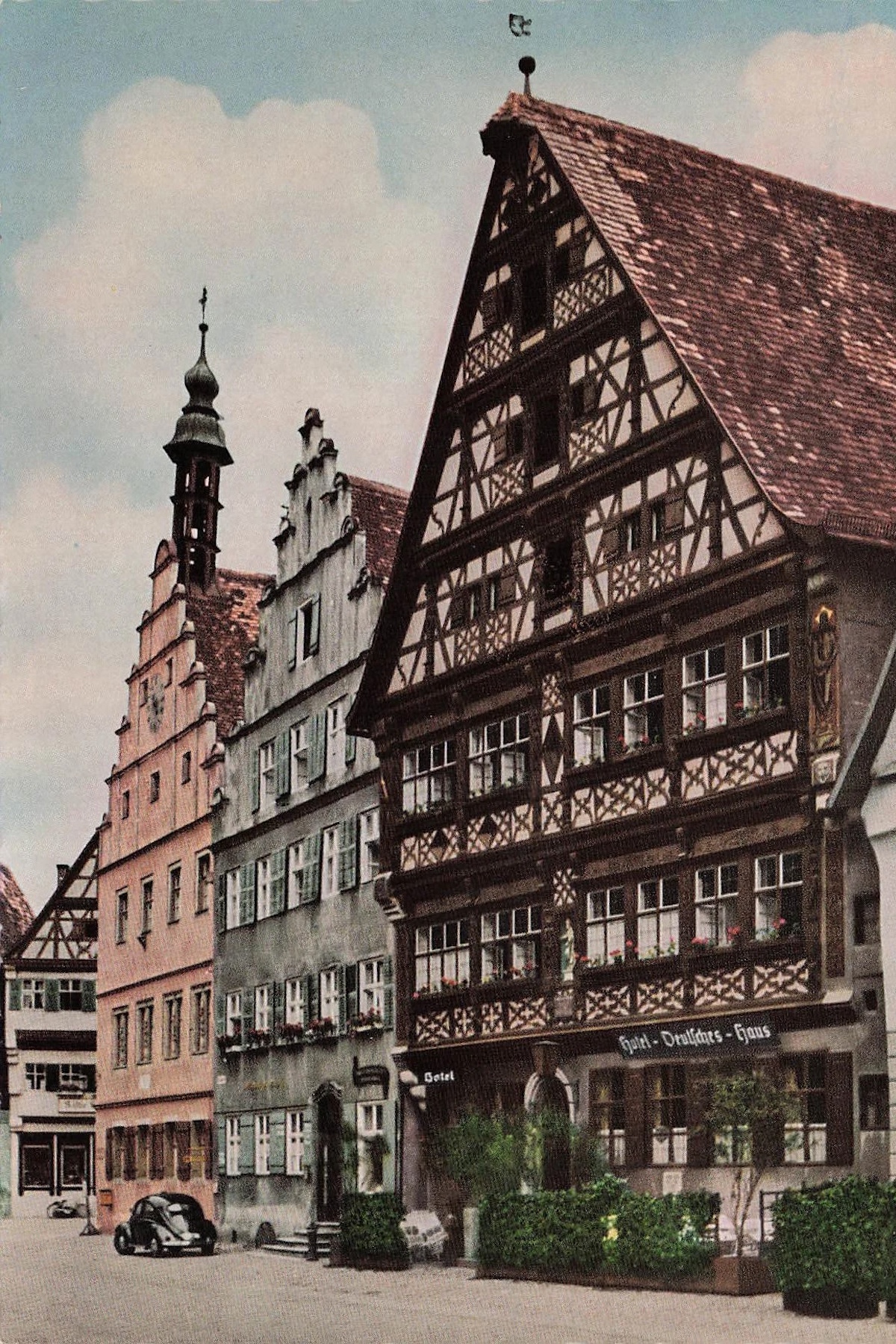
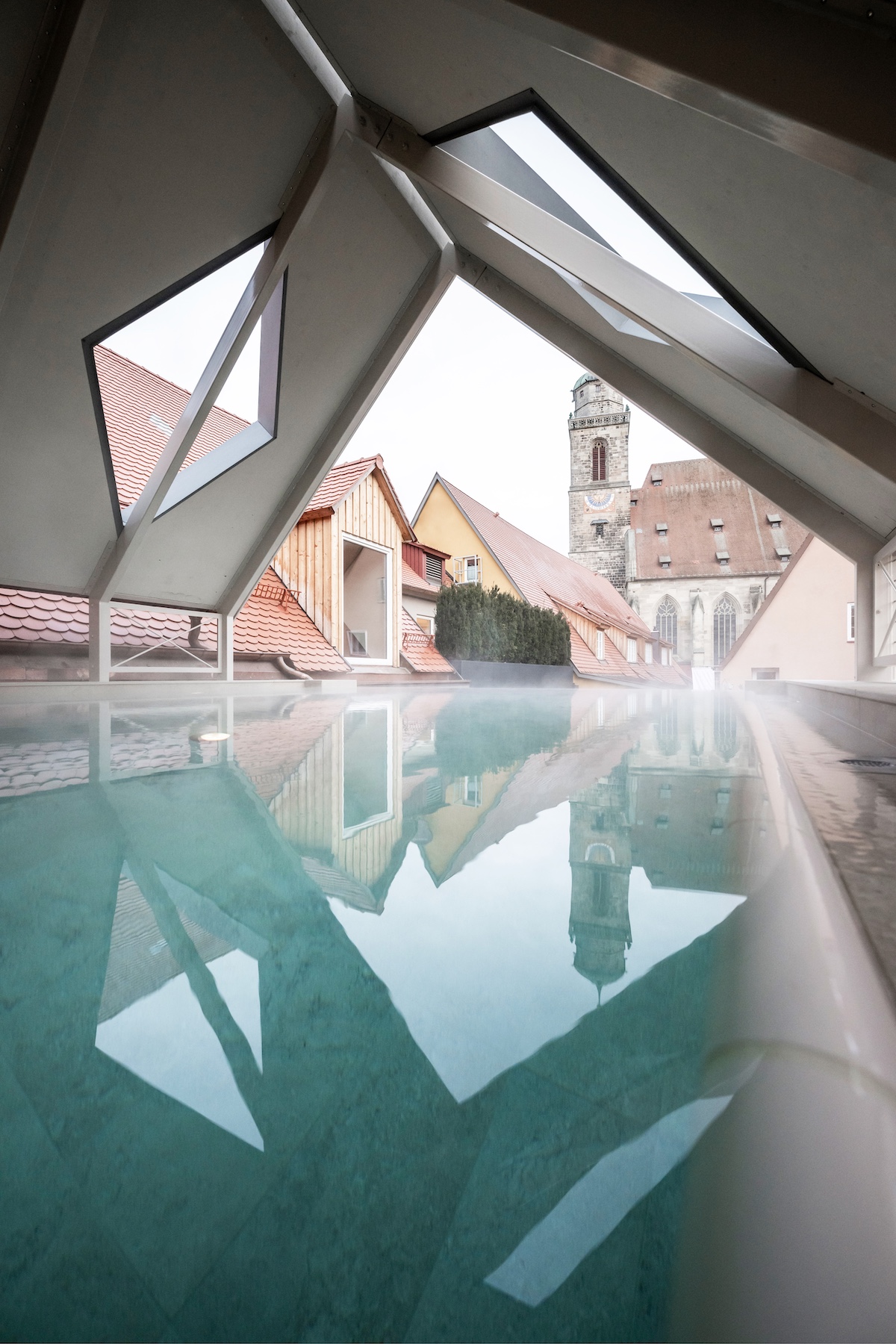
We are located right in the historic center, directly facing St. George’s Cathedral. Space constraints made it impossible to add new volumes—the only addition we made extends toward the inner courtyard, to accommodate the pool. This limitation was clear to us from the very beginning, but it also represented an exciting design challenge.
Our approach was to place the spa on the top floor so that the most remarkable level of the building would not be reserved for a single privileged room, but could instead be experienced by everyone. We also had the unique challenge of fitting a spa into the old attic spaces—something we had never done before. A bold move, but one we are absolutely delighted with.
Working within five conjoined 15th-century buildings, what were the most critical preservation requirements set by local heritage authorities, and how did these shape the construction methods for the spa?
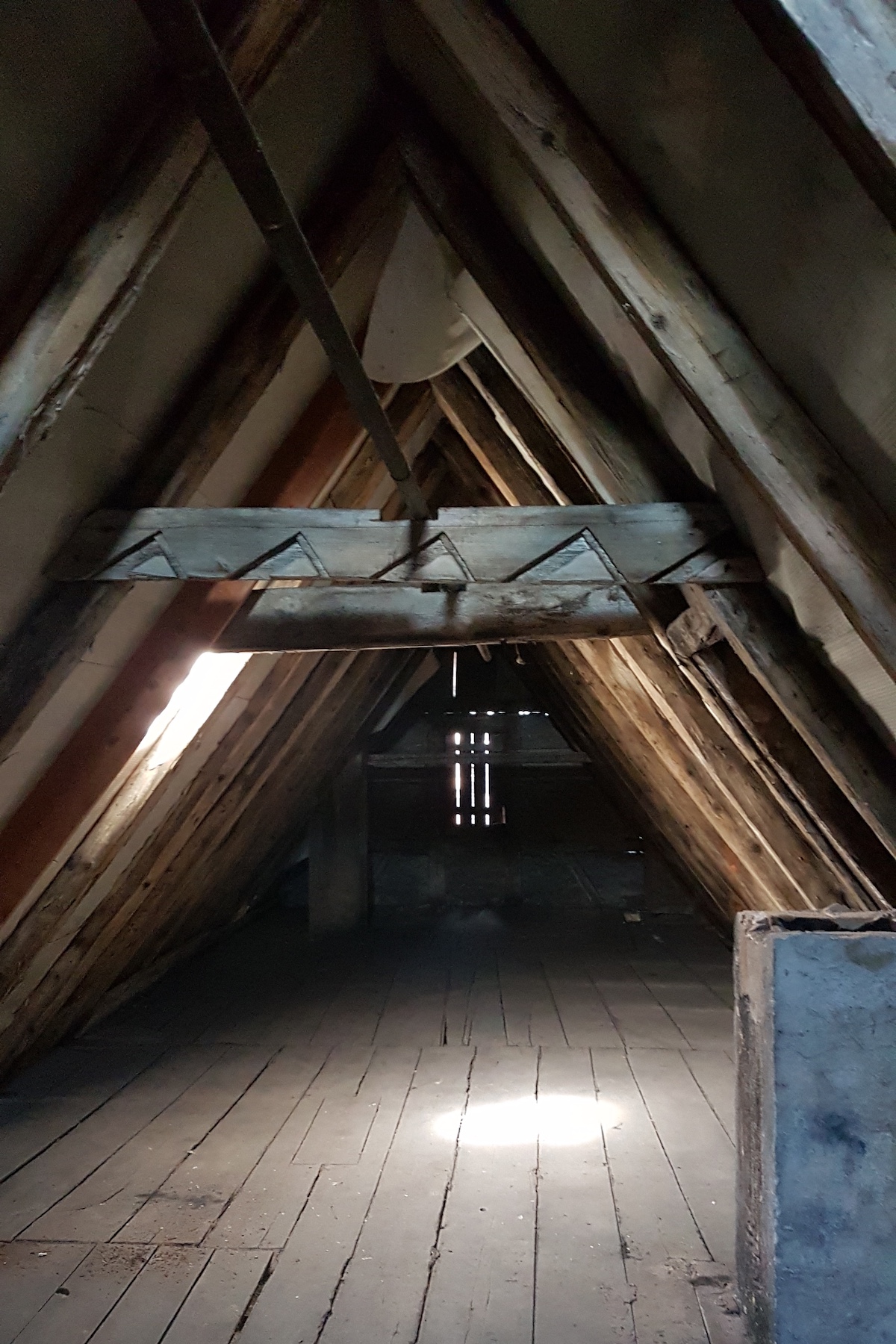
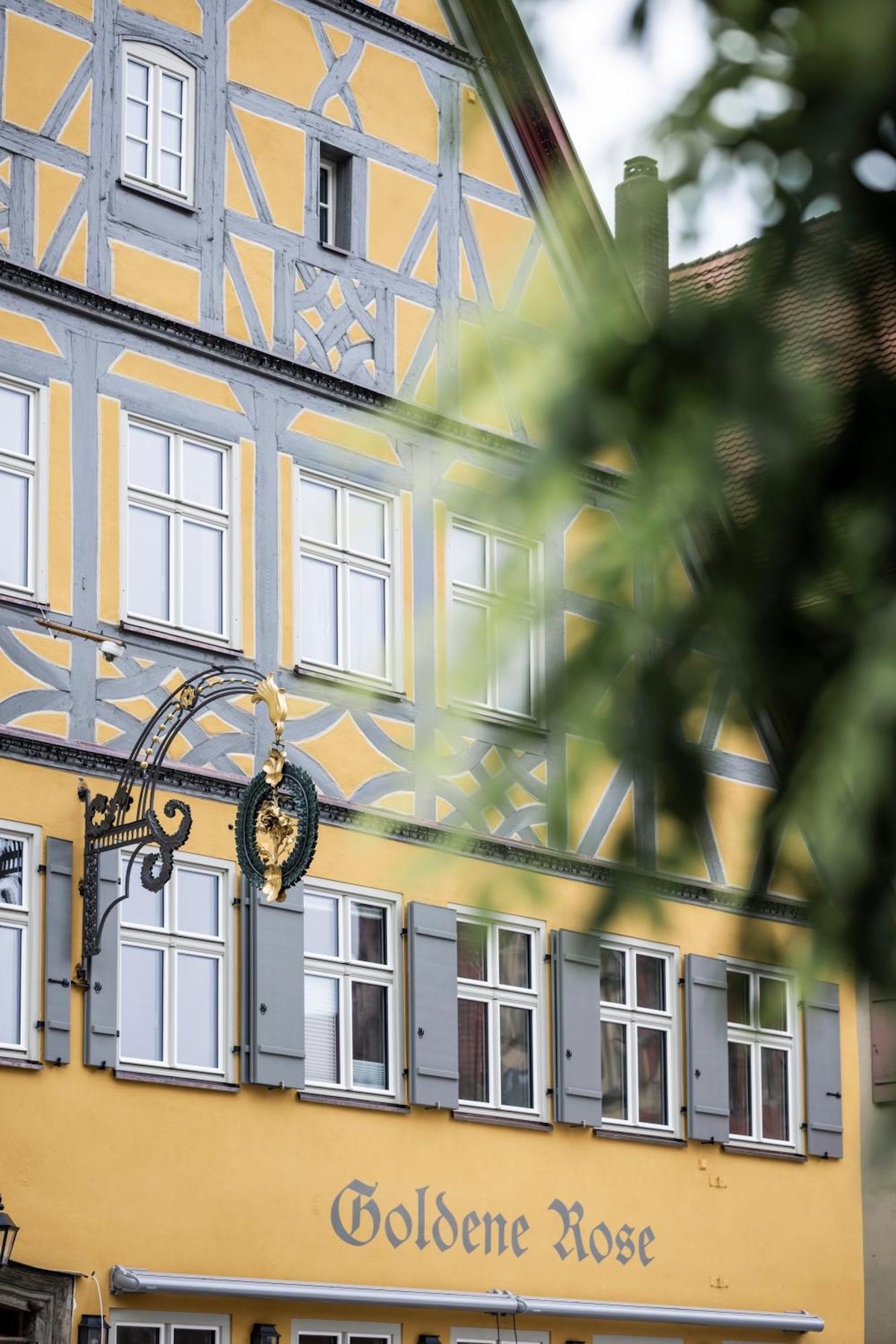
The five buildings are rich in layered history. The main building, a wide-gabled house with a saddle roof and half-timbered gable, dates back to the 16th century, with later renovations in the 18th and 19th centuries. Among the complex’s cultural highlights are the main building, which served as an inn from 1841 and welcomed Queen Victoria on September 19, 1891, and the old theatre hall, home to Dinkelsbühl’s first cinema in 1911. The ensemble is a remarkable example of local building traditions, and the historic center of Dinkelsbühl itself is celebrated as one of the best-preserved in Germany. Inside, too, architectural gems are to be found, from the stairwell to the cinema hall.
Heritage authorities required a restoration faithful to the original. Over the three years of work, we uncovered many fascinating details—like the arched-top rectangular windows of the Kinosaal, which we restored to their original shape.
A key challenge was managing the differing floor levels and bringing all the necessary technical systems and installations up to the top floor. Despite these complexities, the project allowed us to engage deeply with the building’s history while creating a contemporary spa experience.
The original roof timbers are a striking feature of the spa’s atmosphere. Were they always intended to be left visible, and what technical interventions were necessary to preserve, stabilise or integrate them with modern MEP and insulation systems?
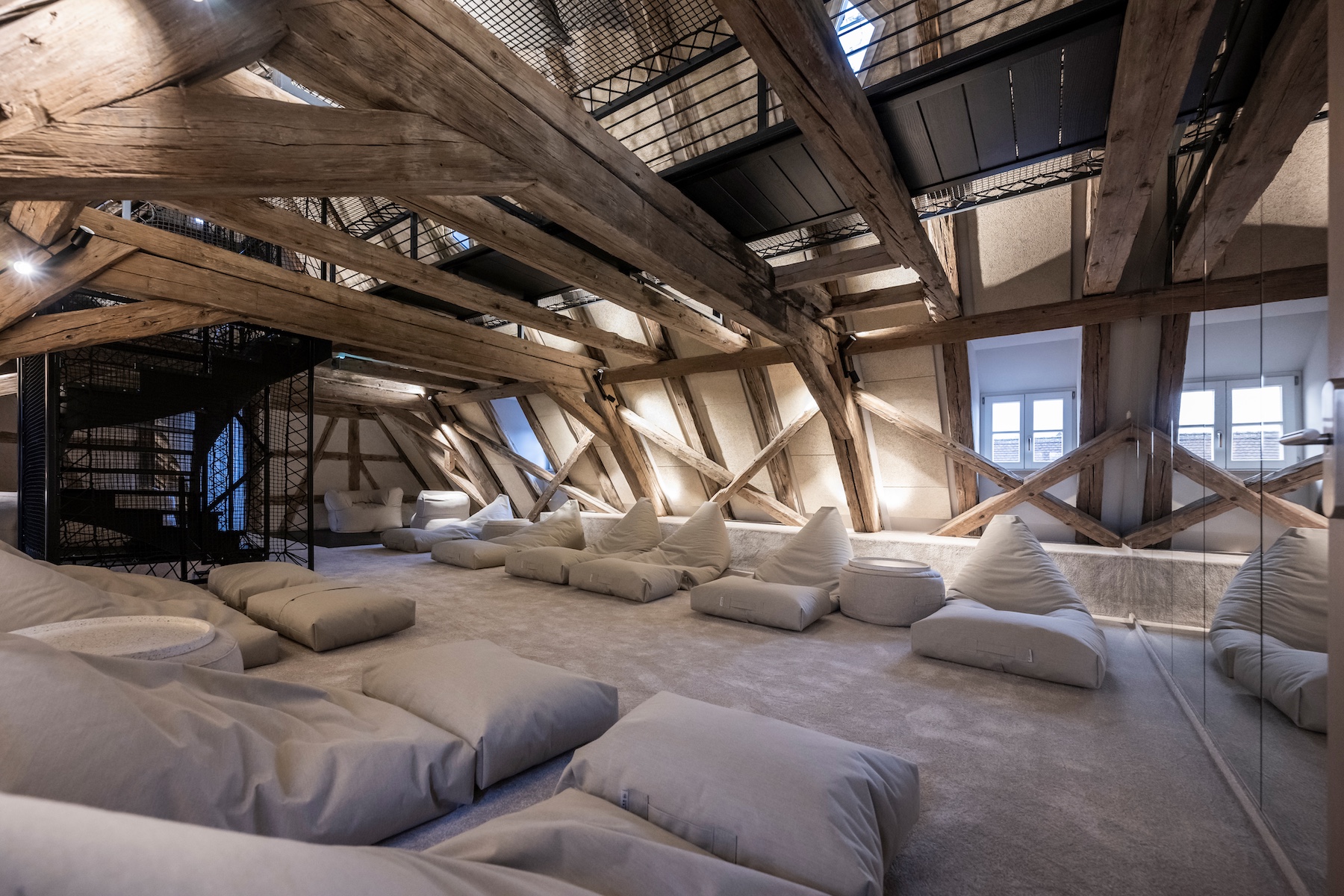
Yes, the timbers were always intended to remain visible. At first, we thought they would need to be protected behind a glass partition, but later we determined that they could be integrated directly into the saunas. The entire building underwent a structural analysis, and the floors were reinforced where necessary. Technical rooms were created to house the wellness systems, and we worked closely with MEP engineers to determine the best approach. In the attic floors, new floor-slabs were added, along with a new steel stairwell.
The cut-out rhombus apertures in the gable reveal sky views from the pool while maintaining discretion from above. How did this geometric choice arise — was it aesthetic, structural, or driven by sightline studies?
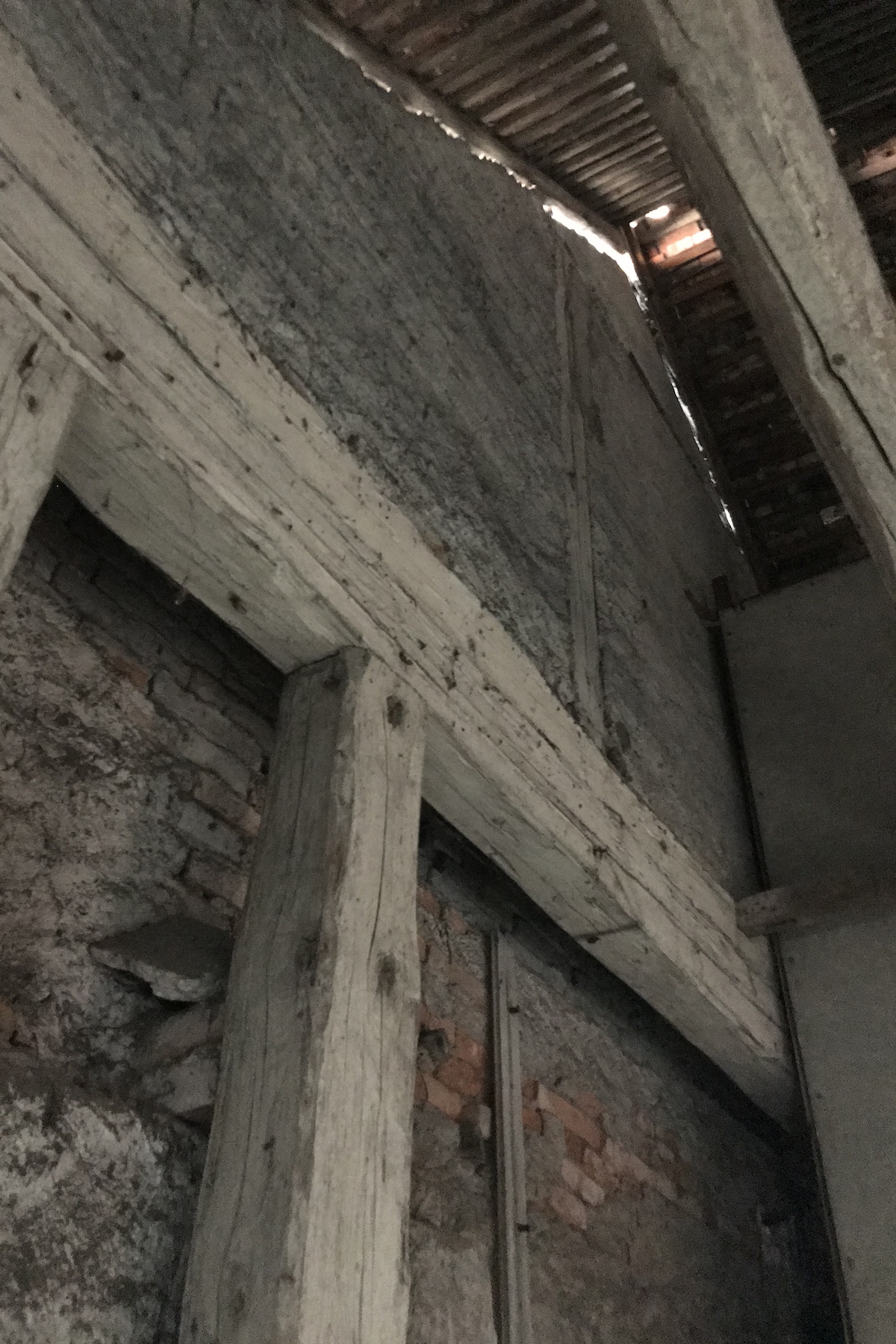

The rhombus-shaped apertures in the gable were carefully designed to reveal glimpses of the sky from the pool while remaining discreet from above. Achieving this balance was essential for project approval, as the pool needed to remain invisible from the air to protect the Dachlandschaft of Dinkelsbühl, yet we did not want to compromise the connection with the sky. The geometric choice draws inspiration from the medieval dormers (Zwerchgiebel), which, when viewed from above, naturally project rhomboid forms. By echoing this pattern, the openings seamlessly integrate into the historic rooftop landscape, becoming almost camouflaged within it. They also resonate with the features of the historical building, forging a direct dialogue between past and present.
The 10-metre infinity pool is roofed yet open to the views. What structural and waterproofing innovations allowed for its seamless integration without compromising the historic roofline or load-bearing capacity?
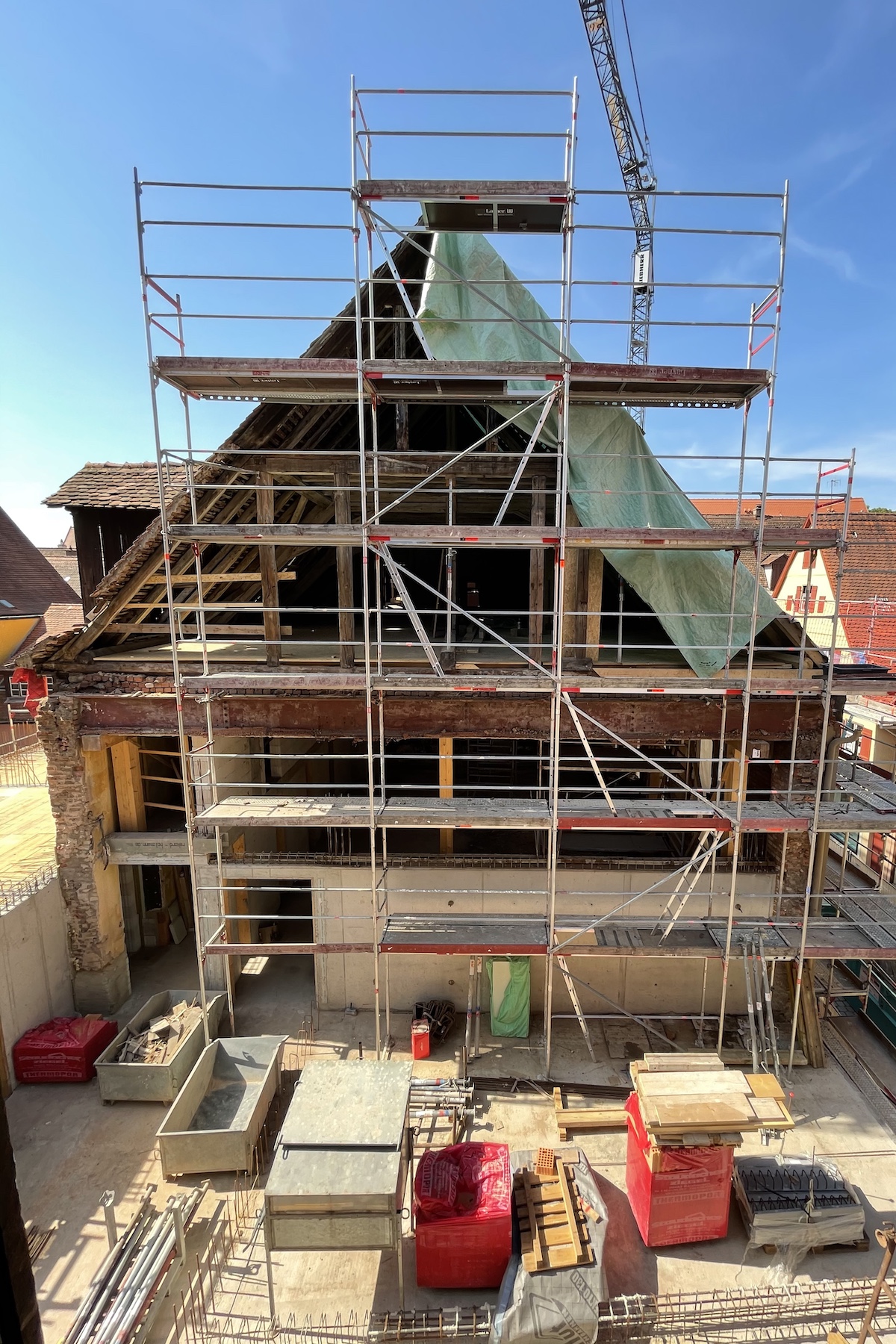
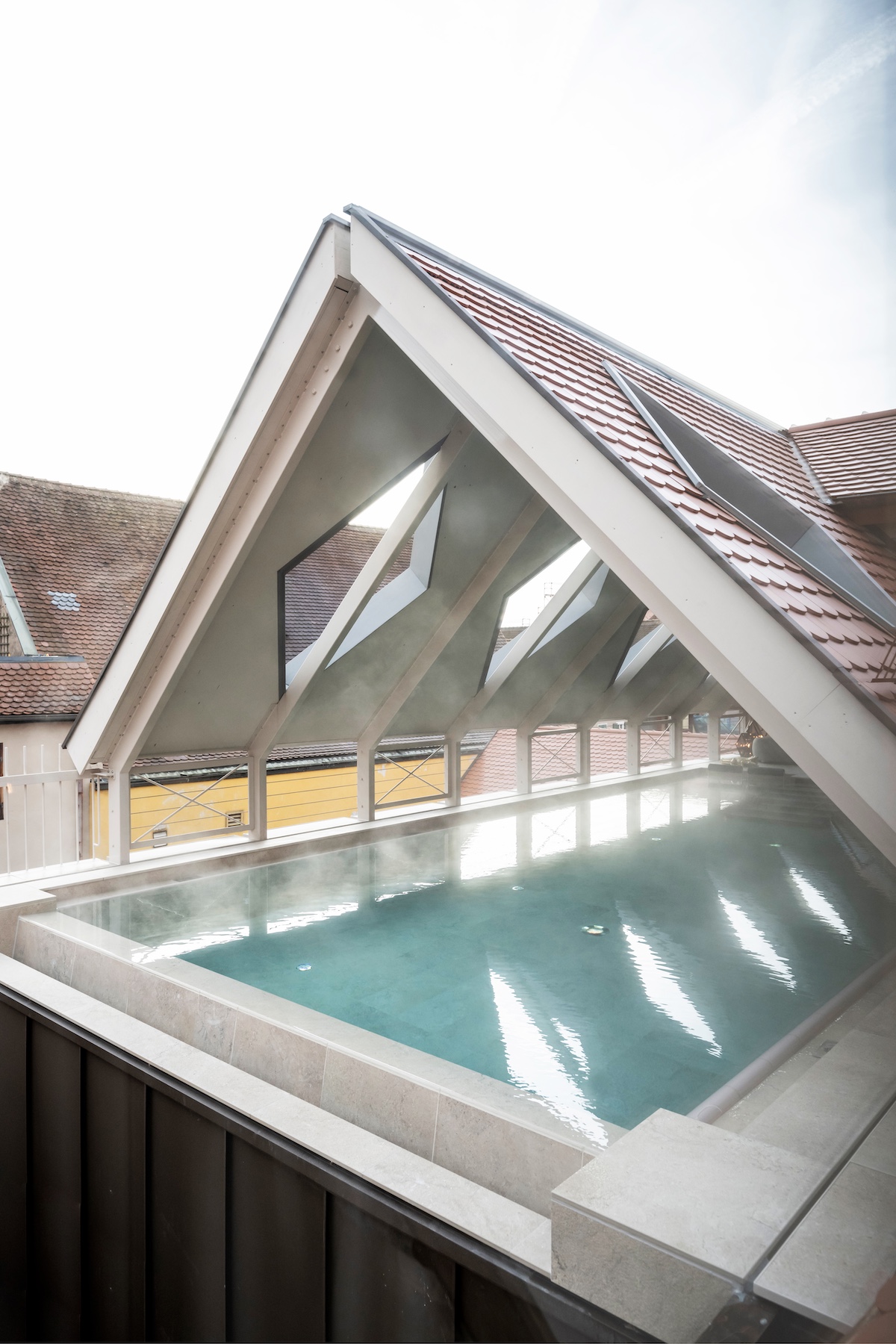
The pool is designed as an extension (Traufseitiger Anbau) towards the inner courtyard, carefully integrated without altering the historic roofline. It is fully enclosed by a reinforced concrete wall, making it structurally independent from the main building. This allows the pool to “float” above the lower floors without transferring significant loads onto the original structure. All technical systems are located beneath the pool, occupying the volume that would correspond to a second floor in a conventional layout. This strategy ensures that the spa’s facilities remain fully functional while preserving the integrity of the historic fabric above and around the pool.